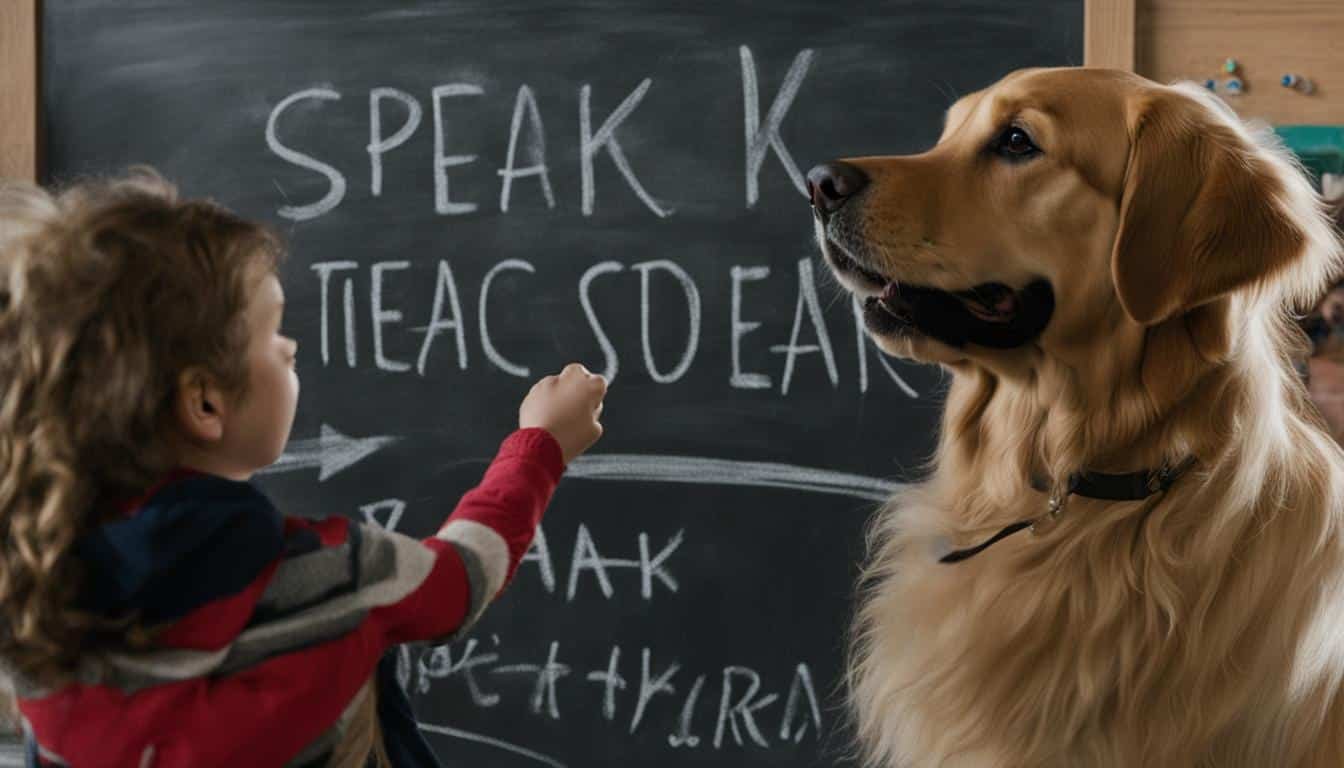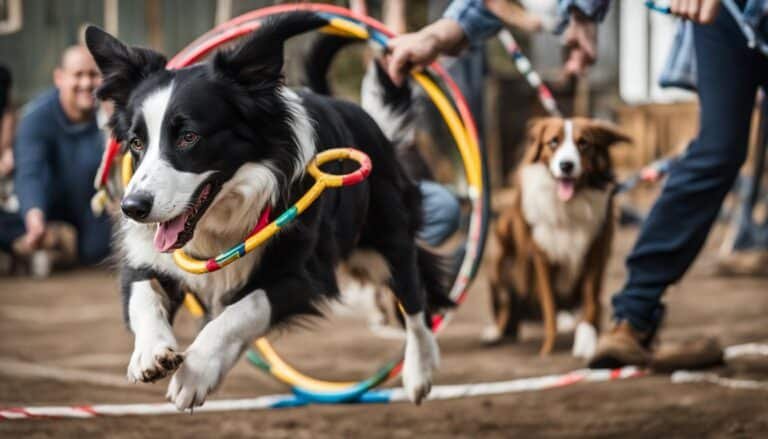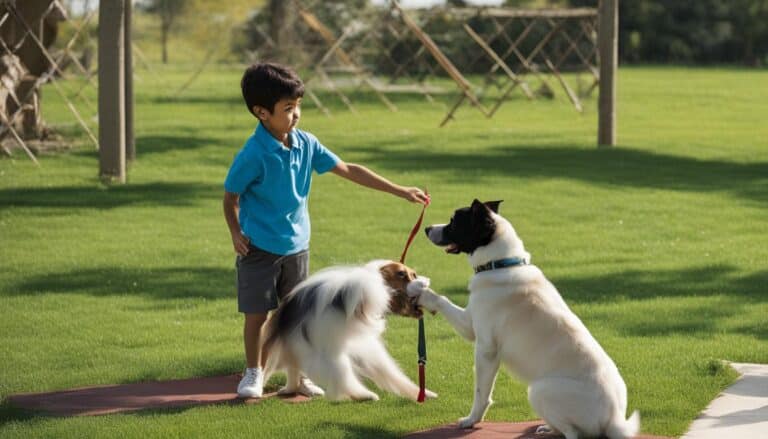How to Train a Dog to Speak
Meet Charlie, an enthusiastic and energetic Labrador Retriever. Charlie loves to communicate with his owner, Sarah, but barking seems to be his primary way of expressing himself. While Sarah appreciates Charlie’s vocal nature, she wants to teach him to speak on command so they can have more controlled conversations.
Like Sarah, many dog owners want to explore ways to teach their furry friends to talk. Training a dog to speak using verbal commands is not only fun but also a useful behavior. It allows you to better understand your dog and enables your dog to communicate their needs more effectively.
In this article, we will guide you on how to train your dog to speak and equip you with valuable insights on verbal commands for dogs, vocalizing dog training, and more. Whether you’re a first-time pet owner or have years of experience, you’ll discover effective techniques to communicate with your dog and develop this impressive skill together.
Getting Your Dog to Bark
To train your dog to speak on command, you need to start by getting them to bark. This can be a fun and interactive training exercise that encourages vocalization and excitement in your dog. Here are a few tips to help you get started:
- Have a reward ready: Have a tasty treat or a favorite toy ready to reward your dog as soon as they bark. This will help reinforce the behavior and make them more likely to repeat it in the future.
- Encourage excitement: Get your dog excited by using toys, playing games, or running around. This will help create an atmosphere that triggers barking and vocalization.
- Clicker training: Clicker training can be a useful tool when teaching the “speak” command. Use the clicker to mark the moment your dog barks, and then provide the reward. This will help your dog associate the clicker sound with the desired behavior.
- Capturing a single bark: It’s important to capture and mark a single bark instead of allowing your dog to continuously bark. By training them to bark on command, you have better control over their behavior and can prevent excessive or nuisance barking.
Using these techniques and being consistent in your training, you can teach your dog to bark on command and have fun interacting with them in a new way.
Incorporating a Hand Signal
Once your dog understands the verbal command for “speak,” you can enhance their training by incorporating a hand signal. Non-verbal commands can reinforce the behavior and help your dog consistently speak on command. A commonly used hand signal involves facing your dog with an open hand and repeatedly closing your fingers against your thumb.
Using a combination of verbal and non-verbal cues provides clarity and consistency in your dog’s training. It helps them understand and respond to your commands more effectively, even in situations where verbal communication may not be feasible. Additionally, hand signals can strengthen the bond between you and your furry companion, as they learn to rely on visual cues and understand your expectations.
When introducing the hand signal for “speak,” be sure to pair it with the verbal command consistently. Begin by giving the verbal cue followed immediately by the hand signal, and then reinforce the behavior with rewards. Over time, your dog will start associating the hand signal with the desired action, making it easier for them to respond to your command without relying solely on verbal cues.
Remember to practice incorporating the hand signal during training sessions and gradually reduce your reliance on verbal commands. This helps your dog become more proficient in understanding and responding to non-verbal cues. With consistency and positive reinforcement, your dog will become adept at speaking on command, both verbally and through the hand signal.
To reinforce the training, it’s important to reward your dog every time they correctly follow the command, whether it’s the verbal cue, the hand signal, or both. Consistent rewards, praise, and positive reinforcement will strengthen the behavior and encourage your dog to continue using their vocalizations when asked to speak.

- Give the verbal command for “speak” followed immediately by the hand signal
- Reinforce the behavior with rewards and positive reinforcement
- Practice incorporating the hand signal during training sessions
- Gradually reduce reliance on verbal commands and encourage non-verbal cues
- Consistently reward your dog for correct responses and reinforce the behavior
Training Considerations
When teaching your dog to speak on command, there are several training considerations to keep in mind. These tips will help you successfully train your dog to speak while avoiding excessive barking and being mindful of your neighbors.
1. Consistent Rewards
Consistency is key when training your dog to speak. Make sure to have a reward ready and only provide it when your dog barks upon command. This will reinforce the behavior and help your dog understand what is expected of them.
2. Short Practice Sessions
It’s important to keep training sessions short and focused. Dogs have short attention spans, so practicing the “speak” command in short bursts will prevent boredom and maintain their interest. Aim for multiple sessions throughout the day rather than one long session.
3. Avoid Excessive Barking
While teaching your dog to speak is fun, it’s important to avoid encouraging excessive barking. Only reward your dog for a single bark when asked, and avoid reinforcing continuous barking. This will help prevent nuisance barking and maintain control over the behavior.
4. Mindful of Neighbors
When training your dog to speak, be mindful of your neighbors and the impact it may have on them. Choose a time and place that is considerate of those around you, ensuring that excessive barking doesn’t disrupt the neighborhood. This will help maintain positive relationships with your neighbors.
By following these training considerations, you can successfully teach your dog the “speak” command while avoiding excessive barking and being considerate of your neighbors’ peace and quiet.
Practical Application
Now that your dog has mastered the “speak” command, you can put this skill to practical use in various ways. Let’s explore some practical applications of the “speak” command that can make your life with your furry friend even more convenient and enjoyable.
Signaling Bathroom Needs
One practical use of the “speak” command is to train your dog to signal when they need to go outside to relieve themselves. By associating the “speak” command with the bathroom activity, you can teach your dog to bark to let you know when they need to go out. This can be especially helpful if you’re busy or in a different room and your dog needs a bathroom break.
Modifying Volume
Another practical application of the “speak” command is teaching your dog to bark at a lower volume. This can be useful in situations where you want your dog to alert you or others without causing excessive noise or disturbing the neighbors. By incorporating training techniques and rewards, you can condition your dog to bark softly, using a modified version of the “speak” command.
Teaching the “Quiet” Command
Alongside the “speak” command, it’s important to teach your dog the “quiet” command. This command allows you to ask your dog to stop barking on command. By pairing the “quiet” command with the “speak” command, you can train your dog to understand when to stop barking when asked. Consistency and positive reinforcement are key to effectively teaching the “quiet” command.
AKC Trick Dog Title
If you’re looking to showcase your dog’s impressive skills, you’ll be pleased to know that the “speak” command is recognized as one of the tricks on the AKC Trick Dog titles checklist. By training your dog to speak on command, you can work towards earning an AKC Trick Dog title, which not only demonstrates your dog’s abilities but also provides a structured path for further training and accomplishment.
So, whether it’s signaling bathroom needs, modifying the volume of barking, or working towards an AKC Trick Dog title, the “speak” command has practical uses that can enhance the bond between you and your furry companion.

Teaching the “Quiet” Cue
To control unwanted barking and reduce excessive noise, it’s important to teach your dog a “quiet” cue. This command can be paired with the “speak” command to effectively manage your dog’s barking behavior. Gradually increasing the duration of the quiet cue and proofing it in different outside environments will ensure your dog’s response is reliable in any situation.
Here’s how you can train your dog to respond to the “quiet” cue:
- Wait for your dog to stop barking on their own. Patience is key in this step.
- Say the cue word “quiet” in a calm and firm tone as soon as your dog stops barking.
- Immediately reward your dog with praise, treats, or their favorite toy to reinforce the desired behavior.
- Repeat this process consistently every time your dog barks until they associate the cue word with being quiet.
- Mix the “quiet” cue with the “speak” command during training sessions by encouraging barking and then asking for quiet.
- Gradually increase the duration of the quiet cue by waiting a few seconds longer before rewarding your dog.
- Practice the “quiet” cue in various environments with distractions to ensure your dog can respond even in challenging situations.
Remember, consistency and positive reinforcement are key to successfully teaching your dog the “quiet” cue. With practice and patience, you can effectively reduce excessive barking and keep a quieter environment for both you and your furry friend.
Additional Training Options
Clicker training is a highly effective method for teaching your dog the “speak” and “quiet” commands. By using a clicker, you can provide a clear and consistent signal to your dog, reinforcing desired behaviors and facilitating communication.
If you’re looking for professional guidance or more comprehensive training resources, there are various options available. Certified dog trainers can provide personalized instruction tailored to your dog’s specific needs and help you achieve your training goals. They can offer valuable insights, techniques, and troubleshooting solutions to ensure successful training outcomes.
Another convenient option is online training courses. These courses often cover a wide range of dog training topics, including teaching verbal commands for dogs like “speak” and “quiet.” You’ll have the flexibility to learn at your own pace while still benefiting from expert guidance and structured training resources.






